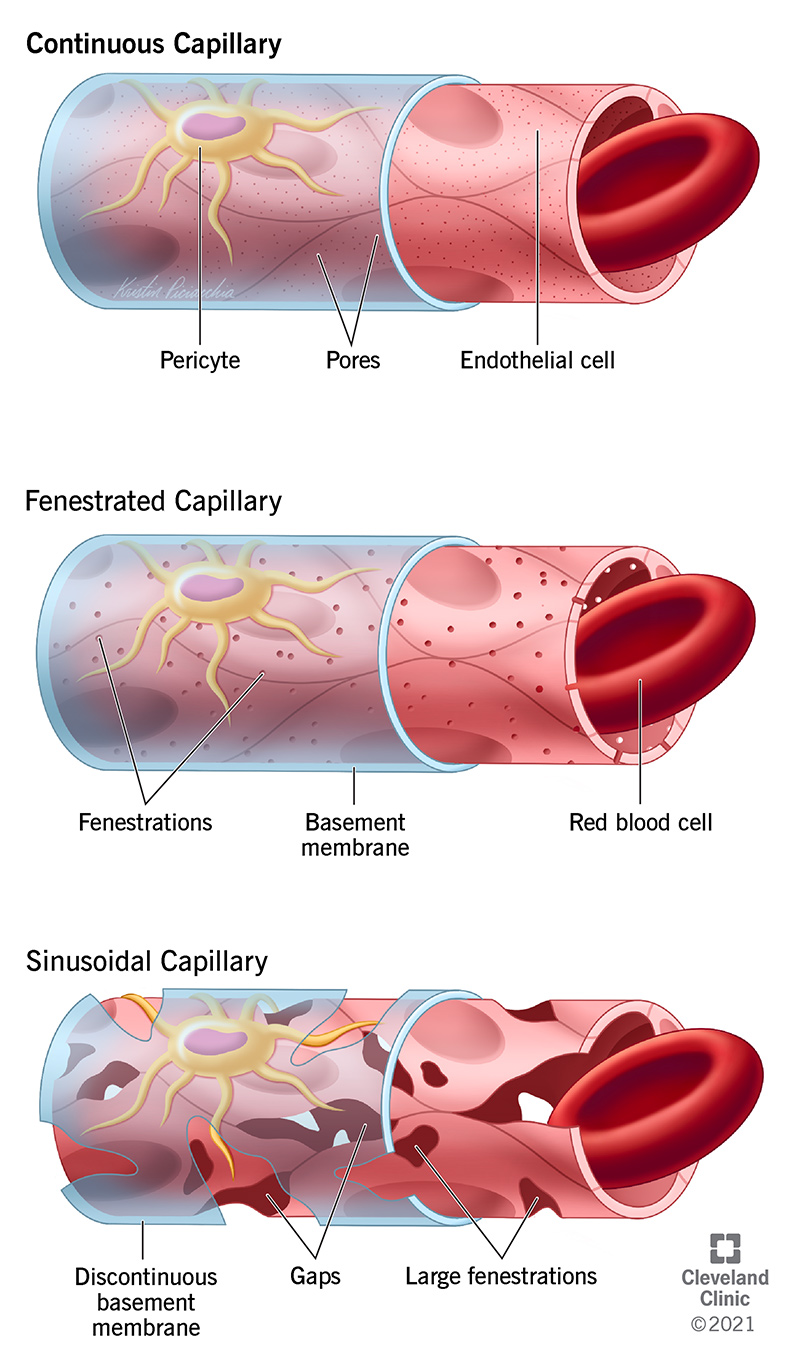Continuous capillaries are the smallest blood vessels in your vascular system. They connect your arteries to your veins. They also support your brain, endocrine system, kidneys, lungs and small intestines. Both genetic and nongenetic conditions can affect continuous capillaries. Lifestyle changes may help maintain the health of your capillaries.
Advertisement
Cleveland Clinic is a non-profit academic medical center. Advertising on our site helps support our mission. We do not endorse non-Cleveland Clinic products or services. Policy

Capillaries (CAP-uh-lair-eez) are tiny blood vessels that transport blood, nutrients and oxygen to cells in your organs and body systems. Capillaries are the smallest blood vessels in your vascular (blood vessel) system.
Advertisement
Cleveland Clinic is a non-profit academic medical center. Advertising on our site helps support our mission. We do not endorse non-Cleveland Clinic products or services. Policy
Continuous capillaries are the most common type of capillary in your body. Like other blood vessels, they have a lining made up of a type of cell called endothelial cells. They are called continuous because these cells sit close together, one after the other.
There are two types of continuous capillaries:
A third type of capillaries, sinusoidal capillaries, is discontinuous. These capillaries have even larger gaps and pores. Sinusoidal capillaries are in your liver, spleen, lymph nodes, bone marrow and endocrine glands.
Continuous capillaries connect arteries to veins in your circulatory system. They are an important part of how blood flows through your body. The continuous capillaries help your body move substances into and out of your bloodstream to and from organs. The:
Advertisement
Continuous capillaries are important to several organs and body systems. They support your:
Continuous nonfenestrated capillaries make up your blood-brain barrier. Here, capillaries control the movement of water, oxygen and other essential substances between your blood and your brain. They prevent toxins from entering your brain, protecting it from injury and disease.
Continuous capillaries are only about 8 to 10 micrometers in diameter (a micrometer is 0.001 mm). That’s about four ten-thousandths of one inch, or the width of a single cotton fiber. Red blood cells have to pass through continuous capillaries in a single-file line.
Continuous capillaries consist of:
Conditions that affect continuous capillaries may be genetic (hereditary). These conditions include:
Nonhereditary conditions that may affect continuous capillaries include:
Advertisement
Scientists are studying whether continuous capillary dysfunction may play a part in:
You can take care of your capillaries by:
You can also work with your healthcare provider to manage conditions that can affect your vascular health. These conditions include:
You can prevent damage to the capillaries under your skin by:
Continuous capillaries are tiny blood vessels that deliver blood, nutrients and oxygen to your cells. Two types, continuous fenestrated capillaries and continuous nonfenestrated capillaries, have different purposes. Many genetic and nongenetic conditions may affect your continuous capillaries.
Advertisement
Cleveland Clinic’s primary care providers offer lifelong medical care. From sinus infections and high blood pressure to preventive screening, we’re here for you.

Last reviewed on 09/23/2021.
Learn more about the Health Library and our editorial process.